If you grew up in South Louisiana, you’ve had Pain Perdu for breakfast. Maybe you called it Lost Bread or French Toast, but dipping slightly stale bread in a custardy mixture of eggs and milk sweetened with spices, then frying them in butter to a golden brown is a favorite breakfast item in Cajun and Creole homes. This is a very simple and ultra-delicious recipe.
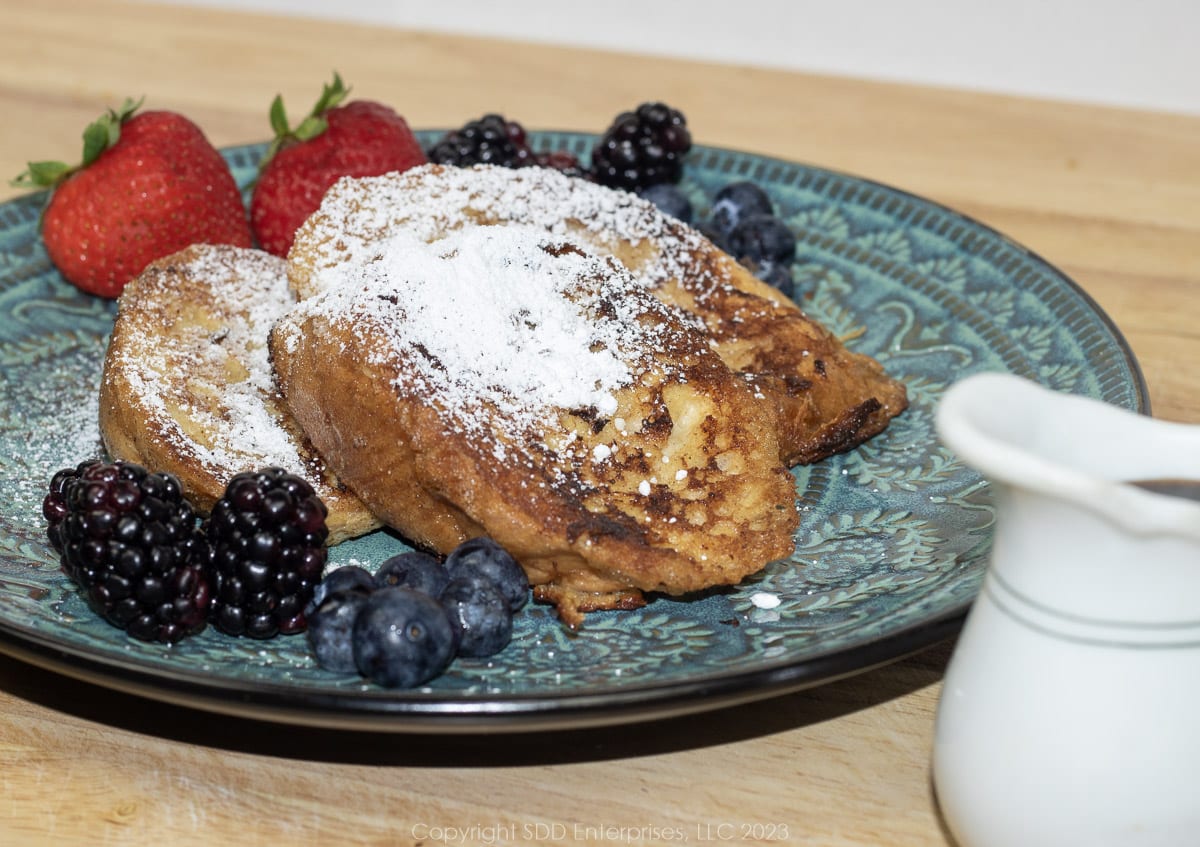
This post is not sponsored, but you will find affiliate links on this page. As an Amazon Associate, I earn from qualifying purchases. The price you pay as a consumer does not change, but I may make a small commission based on your purchase.
Jump to:
What is Pain Perdu?
Pain Perdu is a French term meaning “lost bread”, referring to day-old or stale bread that would normally be of little or no value in the kitchen. With this Pain Perdu recipe, that stale bread is resurrected and transformed into a delicious and popular breakfast. A common trait of Cajun and Creole cooks is to never waste anything, so it's no wonder that a Pain Perdu recipe is a staple in many South Louisiana homes.
However, Pain Perdu did not originate with the Acadian exiles or even the French, Spanish, or African people populating Louisiana in the colonial days. The first known written recipe appeared in Rome in 300 AD and was known as Roman Bread or Pan Dulcis. In 1724, an Albany, New York innkeeper named Joseph French introduced the dish to America, intending to call it “French’s Toast” but did not have the advantage of spell check or autocorrect and it came out French Toast. That name stuck and in 1871, French Toast appeared in the Encyclopedia of American Food and Drink.
Why is This Recipe So Good?
Versions of French Toast or Pain Perdu recipes show up in almost every cuisine around the world. Sometimes sweet and sometimes savory, it's served in numerous fashions under too many names to get into here. Generations in South Louisiana have developed an affinity for this style of Pain Perdu because of its simplicity and versatility. Children love the sweet and custardy treat and cooks love that it uses up stale bread!
Here’s What You Need
Here are some of the key ingredients for this recipe:
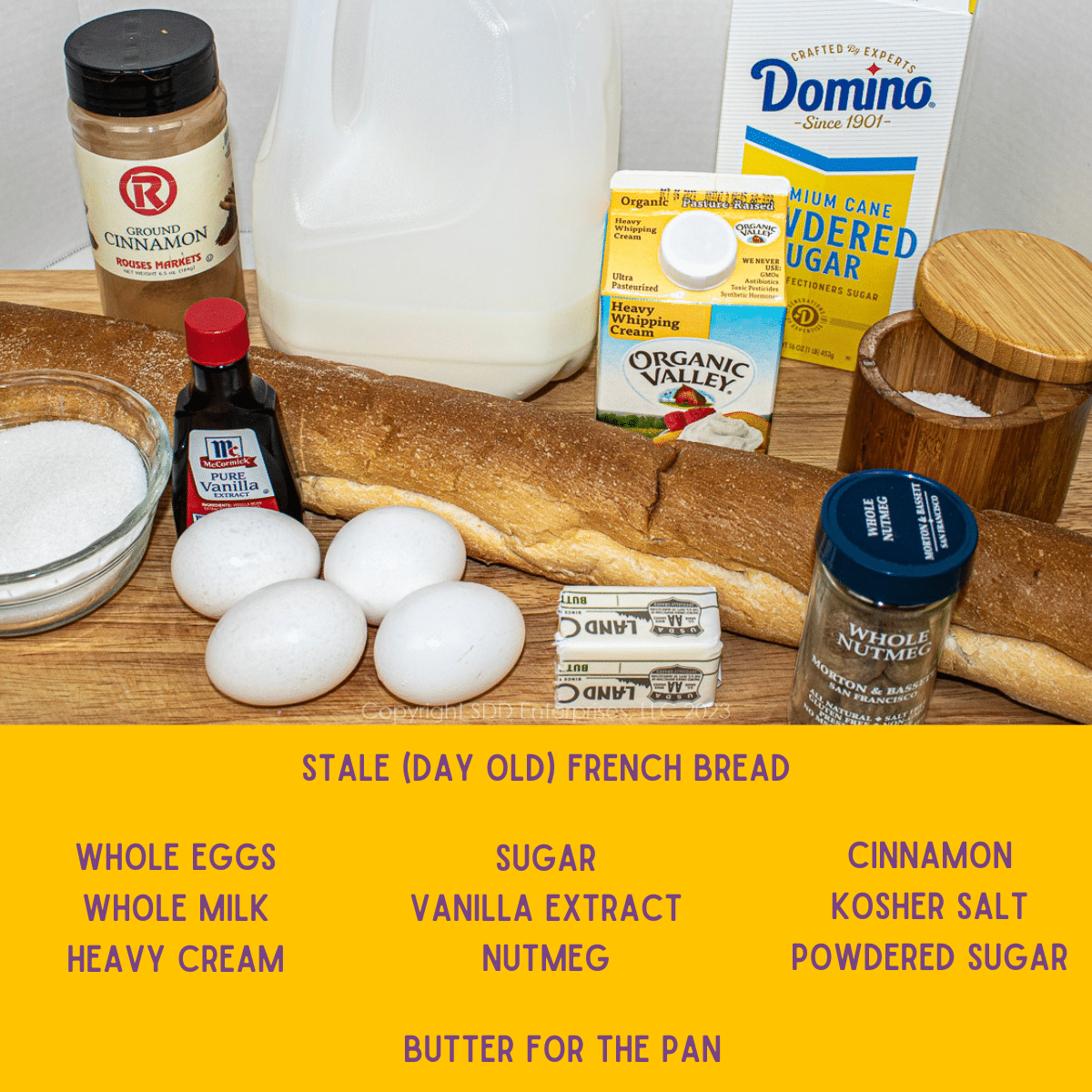
Note on the Bread: This recipe was developed using New Orleans French Bread, something that would make a good po'boy. New Orleans "po'boy" bread is a unique loaf of French bread characterized by a thin, crispy crust that will crumble as you bite into its pillowy, airy insides. The crust soaks up the custard well, but it's airy inside with lots of nooks and crannies is a perfect partner for the custard. Other types of bread work well for this recipe and are discussed in the Hints and Tips (FAQ) section below.
Note on the Dairy Products: Use whole milk, heavy cream, and whole eggs. The fat content of these ingredients adds to the custardy richness. I also use salted butter, but unsalted butter works as well.
Note on the Spices: Although optional, the nutmeg and cinnamon give this recipe a special nutty warmth. Both spices can be overpowering, so should only be used in small quantitates. The nutmeg will be at its best if freshly ground, so you should have a microplane handy to grate it just prior to use.
Equipment
Here is some of the equipment I used in making this recipe:
This post is not sponsored, but you will find affiliate links on this page. As an Amazon Associate, I earn from qualifying purchases. The price you pay as a consumer does not change, but I may make a small commission based on your purchase.
Here’s What You Do
First…you have a beer. If you are preparing this for breakfast or brunch, you may not want to have a beer. How about a Bloody Mary? Let's stick with Café au lait! Whatever you do, the idea is to get in the right frame of mind for an enjoyable cooking experience. Make sure to read the recipe all the way through so you know what you need and what you will do with each ingredient and piece of equipment. When you've got that, do your mise en place and have fun!
Mise en place
Slice the bread on the bias so that you have as much surface area as possible. Make the slices about 1 inch thick.
Pro Tip: Avoid the common restaurant presentation of a 2 or 3-inch slice of bread, it's more difficult to cook properly.

Place the eggs in a large mixing bowl, then measure the remaining ingredients into prep bowls and measuring cups. If you make a mistake while directly placing the ingredients in the mixing bowl, you risk ruining the entire recipe.
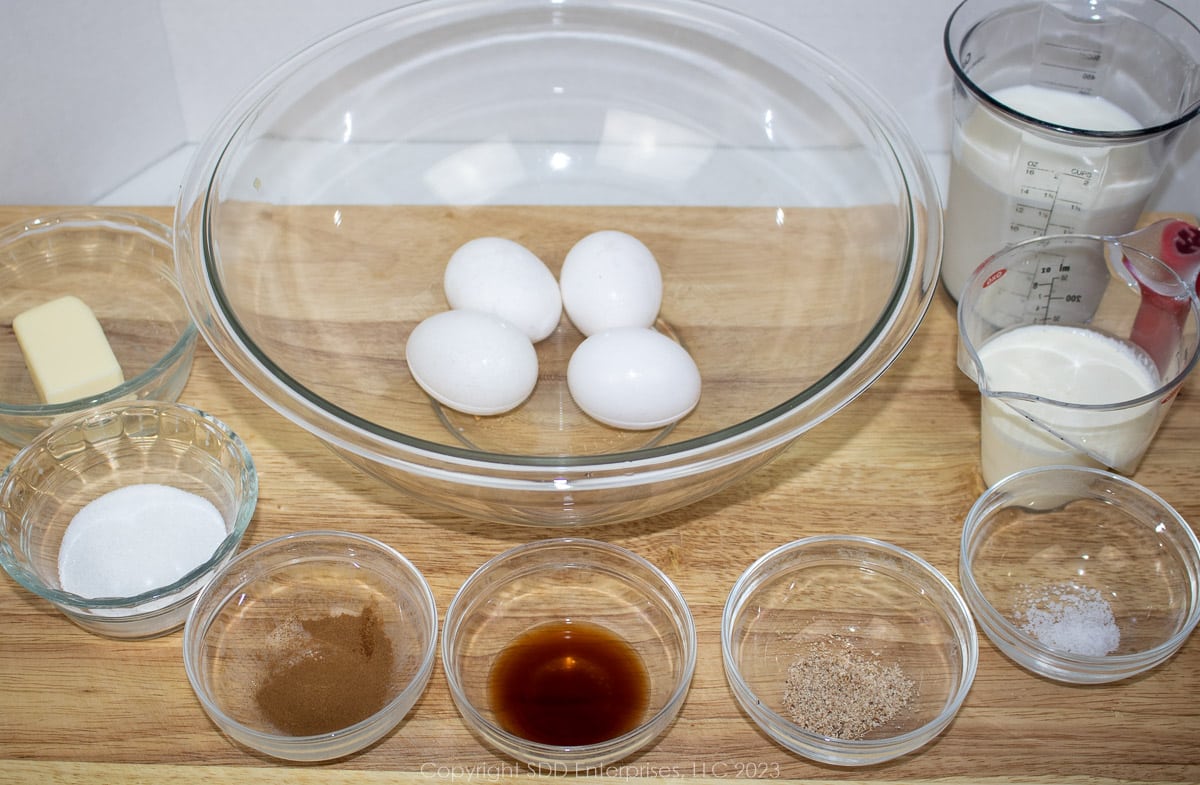
Making the Custard
What happens in this step? The key to great Pain Perdu is the custard. You do not want it to be too eggy or not eggy enough. Here's where we nail it.
Combine the first 8 ingredients in a bowl and whisk to combine. You want to make sure that all of the egg is incorporated into the milk and cream.
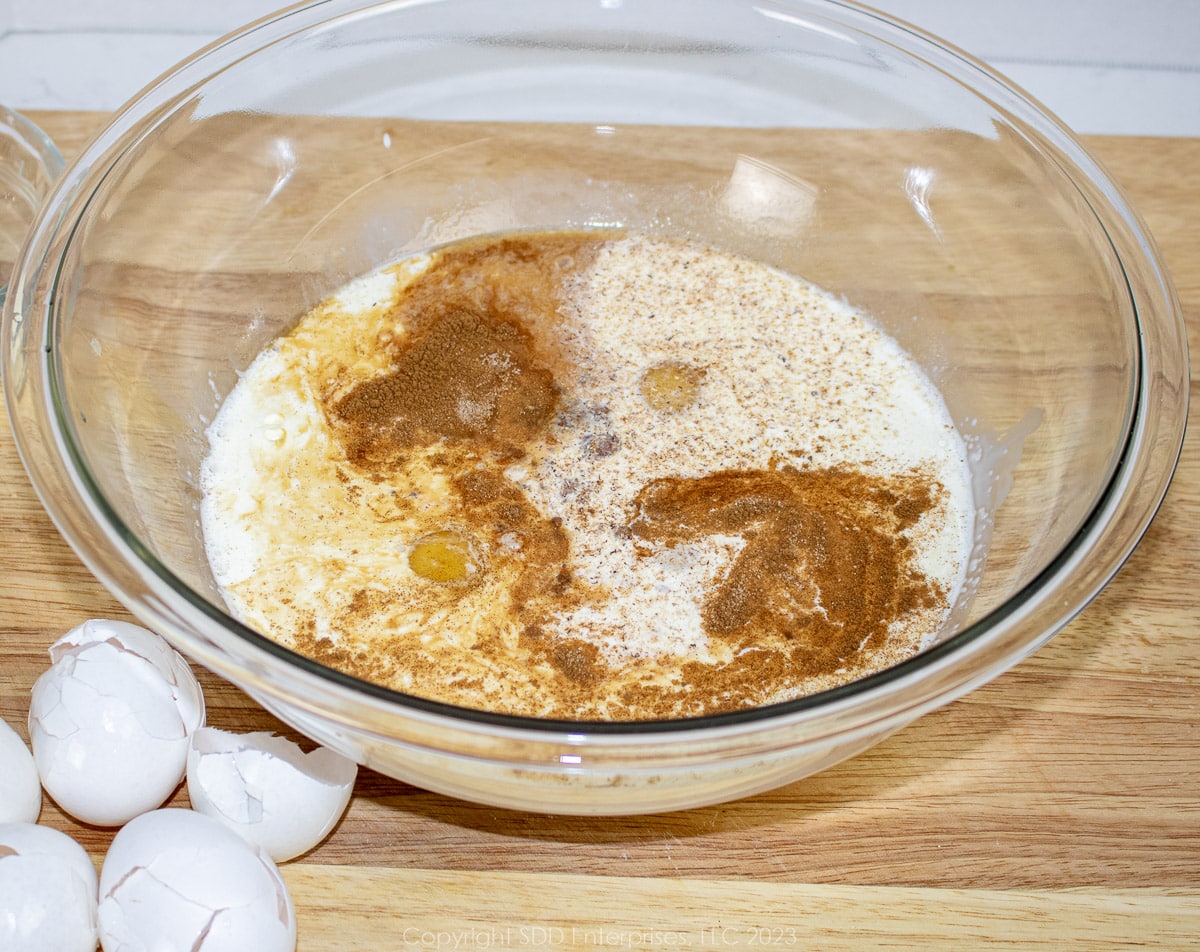
Pro Tip: Whisk like crazy to make sure the egg is completely combined with the dairy. It's not a good look when you have some unincorporated yoke or egg whites cooked onto your Pain Perdu.
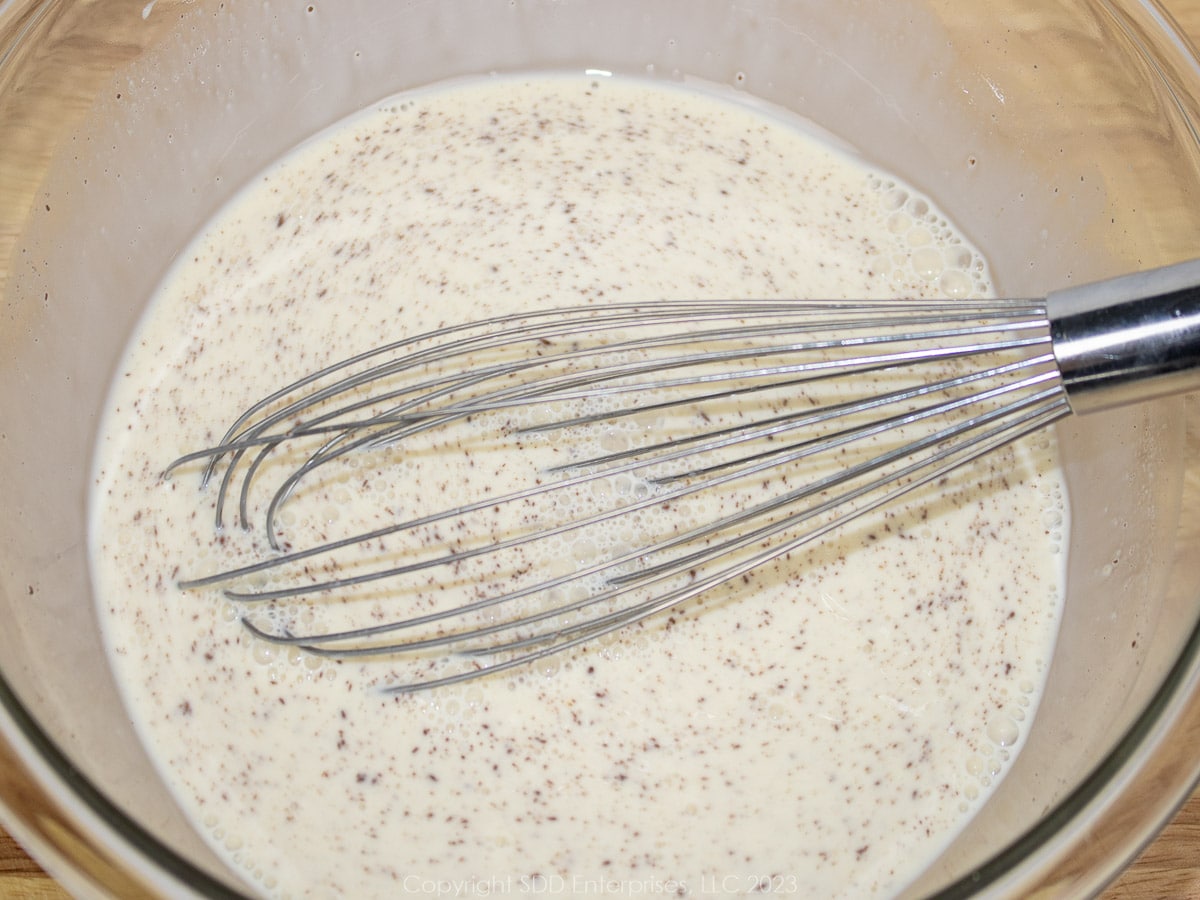
Option on the cinnamon: The cinnamon will float on top of the mixture but will distribute nicely when you soak the bread. Alternately, you could mix 2 parts cinnamon with 3 parts white sugar and sprinkle that on top of the cooked Pain Purdu instead of mixing the cinnamon in the custard.
Fry the Pain Perdu
What happens in this step? A slightly crisp crust with a custardy inside should be achieved in the step.
Melt the butter in a cast iron skillet over medium-high heat, about 300 degrees Fahrenheit. I use this IR Thermometer to measure the surface temperature of the skillet.

Pro Tip: Don't let the butter burn. Adjust the heat to control that but you can add a bit of vegetable oil to the butter to increase the smoke point.
Place a few slices of bread in the custard mixture just long enough for the bread to soak up the custard, but not so long that it becomes mushy and falls apart. This is probably about 30 seconds but really depends on your bread. The more dense your bread is, the longer it should soak.

Pro Tip: Soaking time will vary according to the type of bread you use. Dense bread takes longer.
When the butter is bubbly, add the soaked bread (allow the excess to drip back into the bowl) to the skillet.

Cook the bread on each side until nicely browned. This should take no more than a couple of minutes on each side.

Remove the Pain Perdue to a plate or baking sheet lined with paper towels or parchment paper and keep warm in a 170-degree Fahrenheit oven until all the bread is cooked.

Serving Suggestions
To serve, add 2 or 3 slices of Pain Perdue to a plate, add melted butter, and sprinkle with Powdered Sugar. Serve with your favorite syrup. I highly recommend Cane Syrup. Garnish with fresh fruit.
This goes really well with bacon, ham, or breakfast sausage. Serve alongside scrambled or fried eggs.

Sign up for my email notifications of new recipes and posts right HERE.
Hints and Tips (FAQ)
Leftover Pain Perdu will last in the refrigerator for 5 to 7 days if held in an airtight container. Allow the cooked Pain Perdu to cool to room temperature before refrigerating. It can be reheated in a 300-degree Fahrenheit oven, on the stovetop over medium heat, or in a microwave.
Yes. Allow the cooked Pain Perdu to cool to room temperature, then place a single layer of Pain Perdue on a parchment paper-lined baking sheet in the freezer. Once those have frozen, place wax paper or parchment paper between the slices and transfer them to an airtight freezer container, freezer bag, or vacuum-sealed bag. This will make it easier to take out individual slices without defrosting them all. Using this method, frozen Pain Perdu will last up to 2 months.
An excellent and popular choice is plain old sliced white bread. Sliced wheat bread is good, too. There are many types of bread that work well in this recipe. Good choices are dense breads such as sourdough, challah, or brioche. Most French breads are good for this including baguettes.
The ratio of 3:1 whole milk to heavy cream gives just the right level of creaminess. You can substitute Half-n-Half or leave the cream out altogether. You can also use low-fat or skim milk, but much of the creaminess and flavor comes from the milk fats of the milk and cream. You could also make this dairy-free by using oat, almond, or soy milk and an egg substitute like JUST eggs.
This recipe is very simple and hard to screw up. One way to do that is to burn the butter. A little brown butter isn't bad (in fact it may taste pretty good) but burned butter won't taste good. Adding a little vegetable oil to the butter will raise it’s smoke point. Additionally, the bread can get too mushy if you soak it too long or slice it too thin. The key: for thinner slices, don't soak as long as thicker slices.
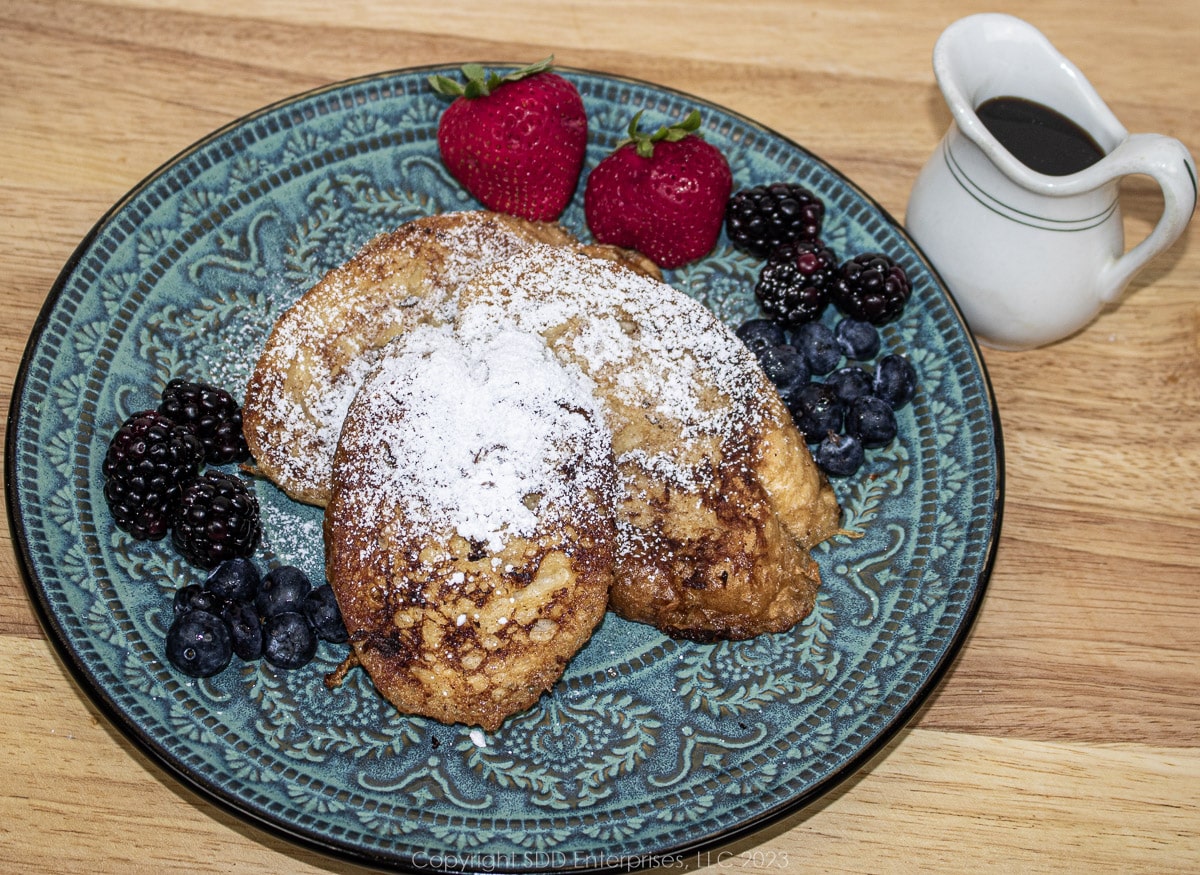
Here are some other great recipes from Sweet Daddy D:
If you make this recipe:
- Tell us about it in the Comments section below
- LEAVE A RATING ON THE RECIPE-worthy of 5-Stars?
- Questions or Comments? that’s the place!
- SIGN UP FOR OUR EMAIL UPDATES so you don't miss anything!
- Post a picture and share it with your friends on our Social Media:
Yeah You Right!
Recipe

Pain Perdu (French Toast)
Here's What You Need
- 8 slices French Bread Stale or day-old (See Notes)
- 4 Eggs
- 1 ½ cup whole milk
- ½ cup heavy cream
- 2 teaspoons vanilla extract
- 6 teaspoons sugar
- ¼ teaspoon kosher salt
- ¼ teaspoon nutmeg
- ½ teaspoon cinnamon
- 4 tablespoon butter
- Powdered sugar to top
Here's What You Do
- Combine all the ingredients (except the bread and the butter) in a bowl. Whisk vigorously to combine everything into a custard.
- Melt the butter in a cast iron skillet over medium heat (about 300 to 325 degrees Fahrenheit).
- Soak a few slices of bread in the custard mixture for about 30 seconds, making sure to coat both sides. (See Notes)
- When the butter is bubbly, add the soaked bread (allow the excess to drip off) to the skillet.
- Cook on each side until nicely browned, about 2 to 3 minutes per side.
- Remove the Pain Perdue to a plate or baking sheet lined with paper towels and keep them warm in a 170-degree oven until all are cooked.
- To serve, add 2 or 3 slices of Pain Perdue to a plate. Add some butter and sprinkle with Powdered Sugar. Serve with Cane Syrup or your favorite syrup.


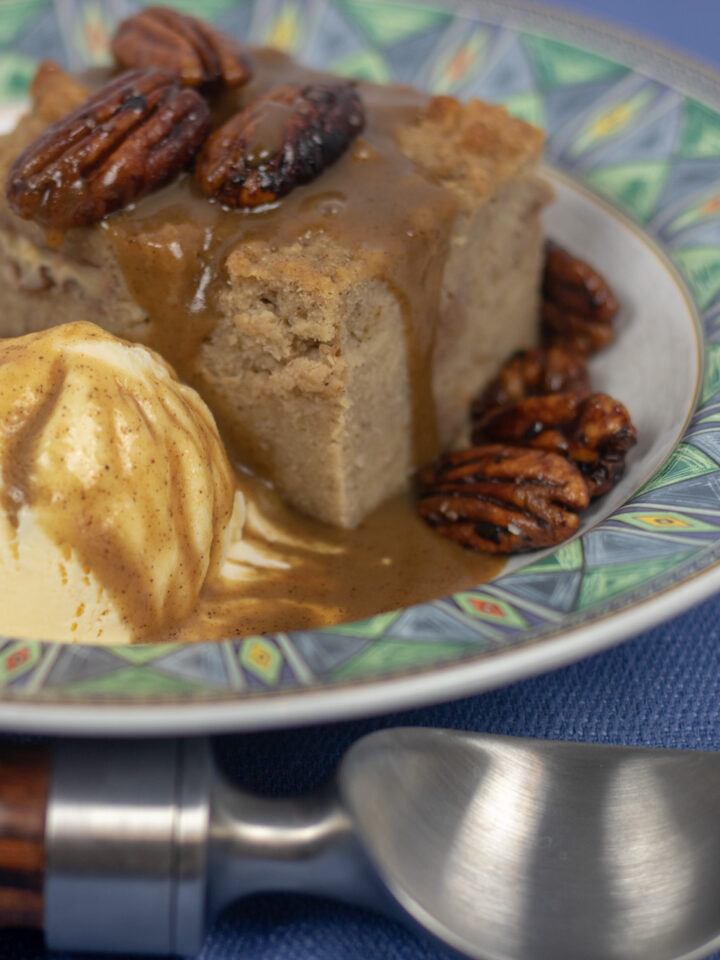

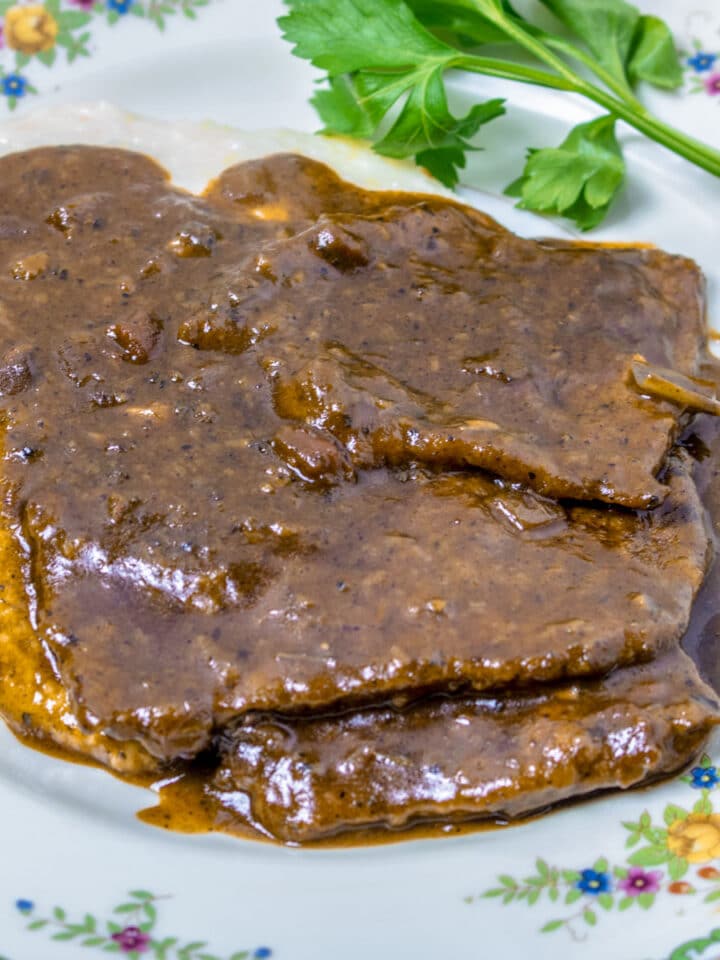

Comments
No Comments